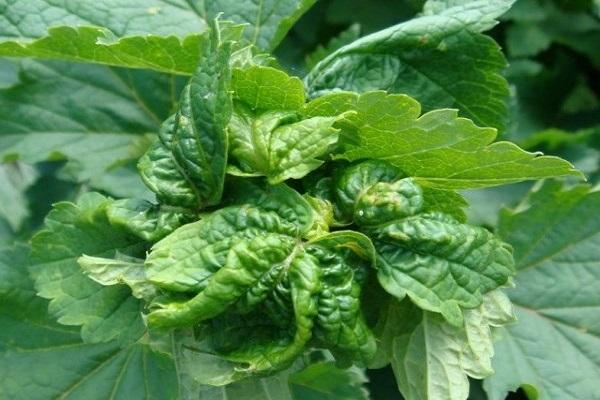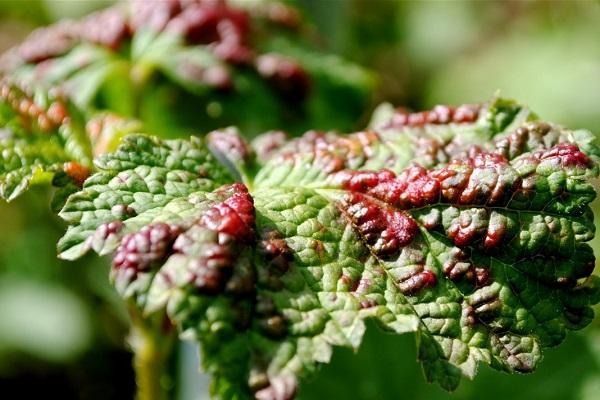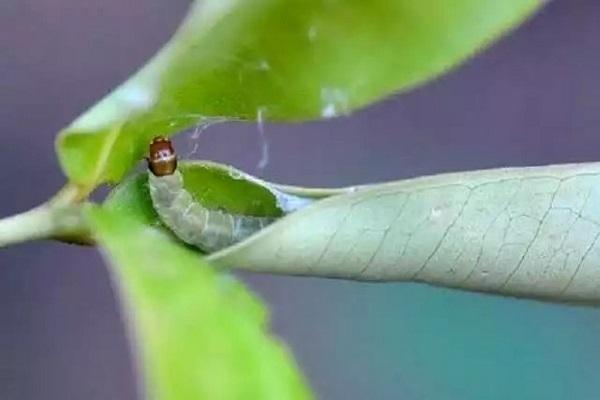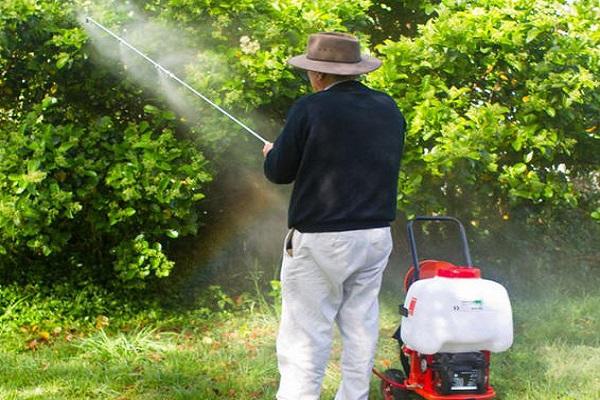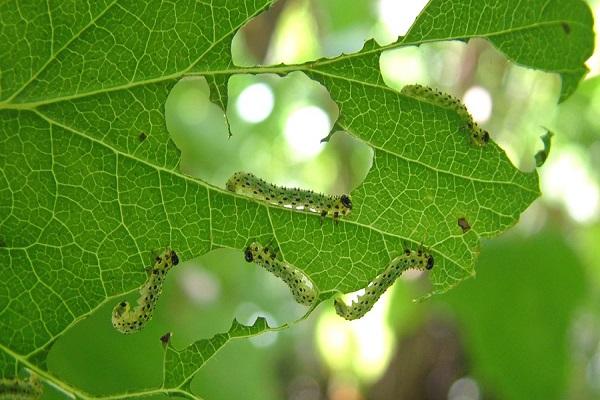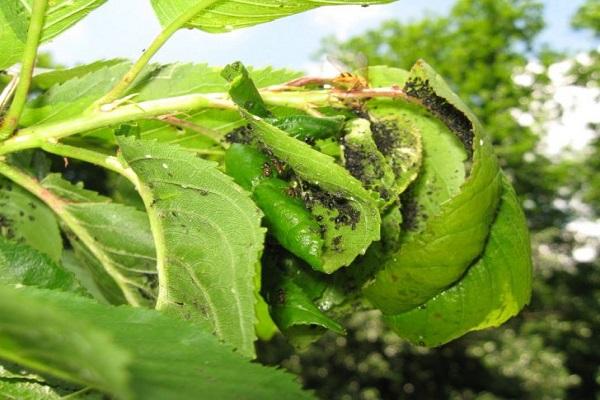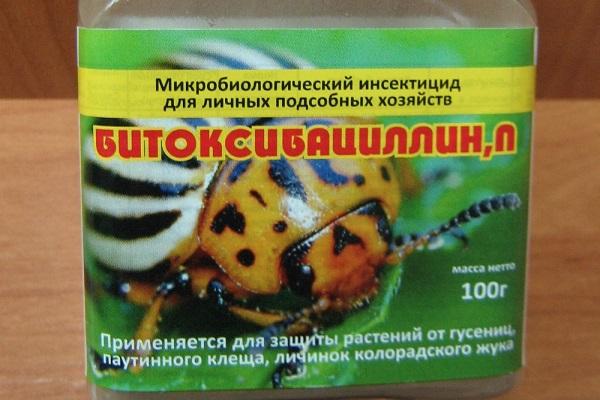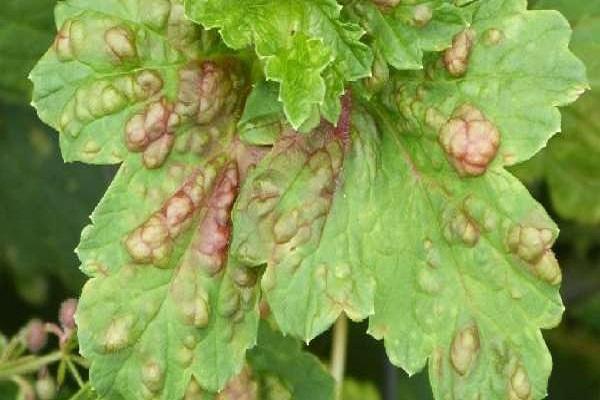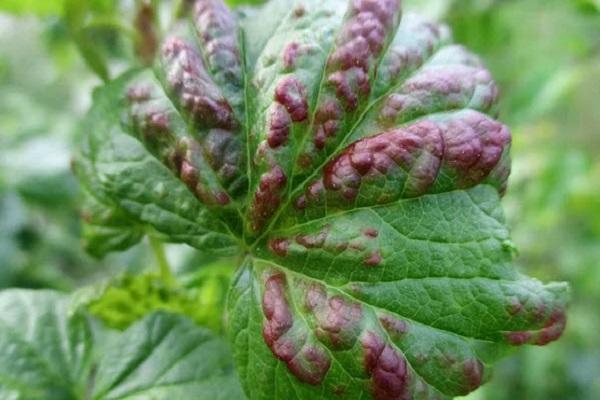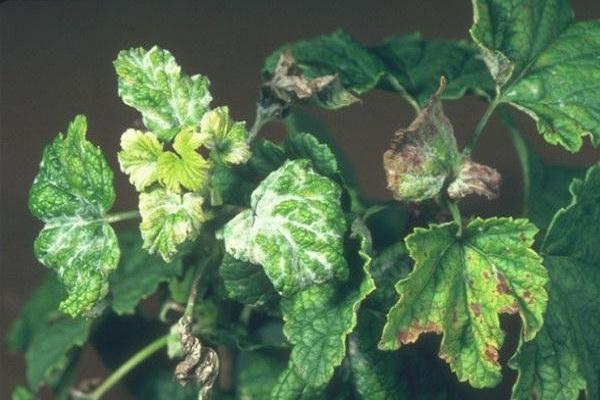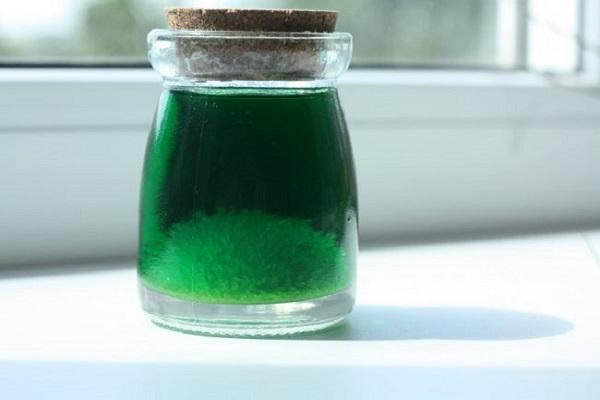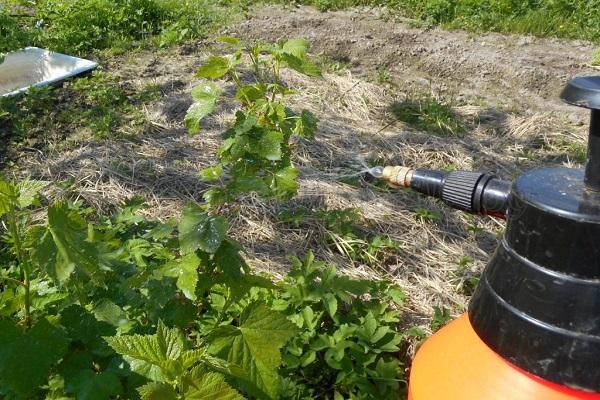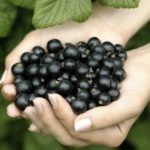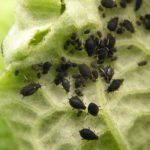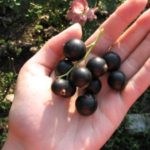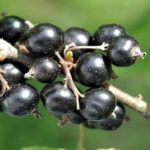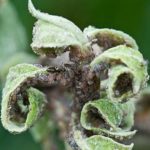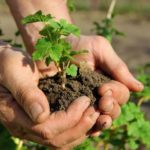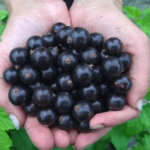The fertility of a crop is indicated by the external state of its growth. Therefore, when currant leaves curl, you need to know how to treat it. Otherwise, a diseased berry bush will not be able to produce the desired amount of crop products. Moreover, without countermeasures, he will eventually die.
- Reasons for currant leaves curling
- Symptoms of pest infestation
- Spider mite
- Gall aphid
- Currant glass
- leaf roller
- How to control pests
- Insect control products
- Timing of treatments
- Processing technology
- Chemicals
- Biological drugs
- Folk remedies
- Types and signs of diseases
- Anthracnose
- Glass rust
- Columnar rust
- Spheroteka
- How to treat currants against diseases
- Preparations for medical treatment
- Scheme and processing time
- Prevention measures
Reasons for currant leaves curling
An indicator of currant health is its appearance. The following factors indicate pathological processes that negatively affect plants:
- The garden crop's upper leaves curl.
- The foliage of shrubs changes color and becomes depigmented.
- The greenery of the plants is rolled up into a cocoon or boat.
- The leaves become denser and take on a drawn-out appearance.
Damage to the appearance of a bush is caused by several reasons. Typically, the main culprits are insect pests and fungal diseases. Each cause requires immediate intervention. Otherwise, the gardener will not only not get the desired yield result, but will also lose the plants themselves.
Symptoms of pest infestation
The juice of currant leaves attracts many insects. Therefore, the berry bush can become a tasty morsel for more than 80 species of pests. Some of them are quite rare. Their appearance, as a rule, is caused by untimely agricultural technology. But there is a type of insect of the first category that, regardless of weather conditions and care rules, every summer resident can encounter.
Let's look at the TOP of the most common insects that cause garden crops to dry out, and the symptoms for recognizing them.
Spider mite
Spider mites are quite small insects. The size of adult pests does not exceed 0.5 millimeters. Moreover, at a young age they are green in color. In this regard, it is quite difficult to notice the appearance of spider mites on currant bushes. These insects can be recognized only by the appearance of the greenery.As a rule, the presence of mites will be indicated by small cobwebs on the back of curled foliage..
Gall aphid
Gall aphids are considered the most dangerous pest for currants. When it attacks, berry bushes lose their immunity to fungal and infectious diseases, which leads to their death. The appearance of insects can be recognized by abnormal growths on currant foliage. First, green growths appear on the greenery of the plants, which over time begin to turn red.
Currant glass
Glassworts are small butterflies with long transparent wings. Adult insects do not pose a threat to plants. Great harm to berry bushes is caused by their larvae - caterpillars, which feed on the pulp of trunks and green plants throughout the entire phase of their life cycle. In the initial stage of the appearance of insects, parasitism of currants is barely noticeable. When the strengthened caterpillars begin to feed abundantly, blackened holes appear on the shoots of plants, the tops of the leaves curl and become enveloped in cobwebs.
leaf roller
Small leaf roller butterflies, as well as glass moths, lay their eggs on currant bushes. After hatching, insect caterpillars actively eat plant pulp. When the time comes for pupation, they begin to curl the leaves around themselves to envelop them. To attach the leafroller, they secrete a sticky substance. The presence of a viscous cobweb will indicate that the currants are affected by these pests.
How to control pests
All of the above insect pests pose a great danger to currants. When they appear, berry bushes lose nutrients that are so necessary for fruit set.In this case, dehydration leads to deformation and withering of the crop, which causes its death. To avoid such negative consequences, at the first symptoms of parasitism, you need to immediately begin pest control measures.
Insect control products
Currant pest control can be carried out in several ways. Among them, the most common are:
- use of chemicals;
- use of organic insecticides;
- folk remedies.
When using the first method, the active substances of chemicals actively deal with pests and their larvae. This prevents the currants from curling. However, chemical elements have a negative effect not only on insects, but also on the plant itself. In this regard, when consuming berries, the risk of harm to the person himself increases.
Organic insecticides are safer. They paralyze the digestive system of pests, while remaining harmless to other insects, plants and humans themselves. But they do not always cope with pest larvae and eggs.
Timing of treatments
It is necessary to combat insect pests throughout the entire growing season of currants.
The optimal processing times are:
- early spring;
- before buds open;
- during active flowering;
- 2 weeks before the start of fruiting;
The final processing of garden crops is carried out in the fall, after harvesting. Moreover, each stage provides certain means.
Important! In cases where currants are affected by a colony of parasites, the plants should be treated every 2-3 weeks.
Processing technology
The first control measure is aimed at destroying insect larvae.It is carried out before the bud break phase and includes the following measures:
- pruning affected shoots;
- removing all suspicious leaves;
- digging and disinfection of the tree trunk circle;
- whitewashing the trunk.
Subsequent treatments are carried out with chemical, biological or folk remedies to destroy adult pests.
Chemicals
The following drugs are recommended as chemicals for currants:
- Aktara;
- Spark;
- Inta-vir.
These remedies are considered the fastest and most effective. However, due to negative effects, they should be used before currants begin to bear fruit.
Biological drugs
Among the most popular biological products that will stop currants from curling are:
- Aktofit;
- Bitoxibacillin;
- Lepidocide.
All these drugs are created on the basis of living organisms, so they do not pose a threat to plants and humans. However, unlike chemicals, biological products are less effective in killing insect eggs and larvae. They are used at all stages of the growing season.
Folk remedies
Traditional methods of pest control are considered the most harmless, but at the same time, quite effective. In addition, their use saves the family budget.
For processing currants, there is a proven folk method based on garlic. It is prepared from 1 head of chopped garlic and 1 liter of boiled water. The resulting concentrate is first infused for 1 week, and then it (60 milliliters) is diluted in 10 liters of water.
Types and signs of diseases
Despite the fact that garden crops are divided into white, red and black varieties, they are all susceptible to the same diseases. Each pathology in its advanced form leads to the death of the berry bush.Therefore, it is very important to recognize diseases in a timely manner and take appropriate measures.
Let us give examples of the most common currant pathologies and their symptoms.
Anthracnose
The causative agent of this disease is the fungus Colletotrichum orbiculare. The first signs of infection are observed in mid-summer. With anthracnose, the currant leaves first turn red, then they dry out and fall off.
Glass rust
Infection of berry bushes with goblet rust can be noticed in the first half of the growing season. The first signs of the disease are orange pads on the underside of the foliage. When the pathology becomes severe, the berries of the bush become deformed and become one-sided. At the same time, they stop growing and fall off the bush.
Columnar rust
When a currant is affected by columnar rust, its leaf is covered with orange horny spores on the underside. These signs of pathology are noticeable in the first half of summer. The lesions then turn brown and cover all sides of the greenery by late August.
Spheroteka
The first signs of the spheroteca can be seen already in May. A symptom of the disease is a white coating that covers the greens, shoots and currant berries. Later, the “pollen” turns into mold and becomes dark brown. As a result, currant berries lose their taste, and diseased bushes die.
How to treat currants against diseases
In order for the currant to stop curling and quickly restore its health, at the first signs of illness you need to immediately begin processing it. The fight against diseases is not as difficult as it might seem at first glance. But before carrying it out, you need to know the timing and what funds will be needed.
Preparations for medical treatment
Today, there are various drugs that can cope with the main diseases of the berry bush.
Of these, the most gentle are considered:
- 3% solution of copper sulfate;
- 1% solution of Bordeaux mixture;
- Topaz;
- 5% solution of iron sulfate.
An infusion of ash can be used as a folk remedy. It is made from 100 grams of ash and 1 liter of water. First, the concentrate is infused for 3 days, then filtered and diluted with 3 liters of water.
Scheme and processing time
Processing of garden bushes is carried out at certain times.
Stages and scheme of disease control:
- Early spring. During this period, all fallen leaves are removed from the garden plot, the soil is loosened, and the currant bushes are sprayed with copper or iron sulfate.
- Budding stage. As soon as the first buds appear on the currant bushes, they are treated with a 3% solution of Bordeaux mixture.
- After flowering and harvesting. At this stage, the currants are sprayed with a 1% solution of Bordeaux mixture.
If the currants were not processed within a certain period of time, the dosage of the drugs cannot be increased. To do this, it is better to spray the bushes as quickly as possible using a product such as Topaz.
Prevention measures
In order to prevent the development of diseases and the appearance of insects, you need to follow several rules.
Preventive measures include the following:
- As soon as the snow melts, all dried and diseased branches must be removed from the currants.
- In spring, it is recommended to clear the garden area of fallen leaves and other organic matter.
- The branches of the bushes should not touch the ground; for this they should be supported.
- Collect and destroy insect pupae in a timely manner.
It is also recommended to treat the soil with urea in the fall.
So, having considered the reasons why currants curl, as well as what to do at these moments, every gardener will be able to take appropriate measures in a timely manner. As you can see, they are not so complicated and do not take up a lot of free time. However, by using them, it will be possible not only to save the berry bushes from death, but also to increase their fertility.

